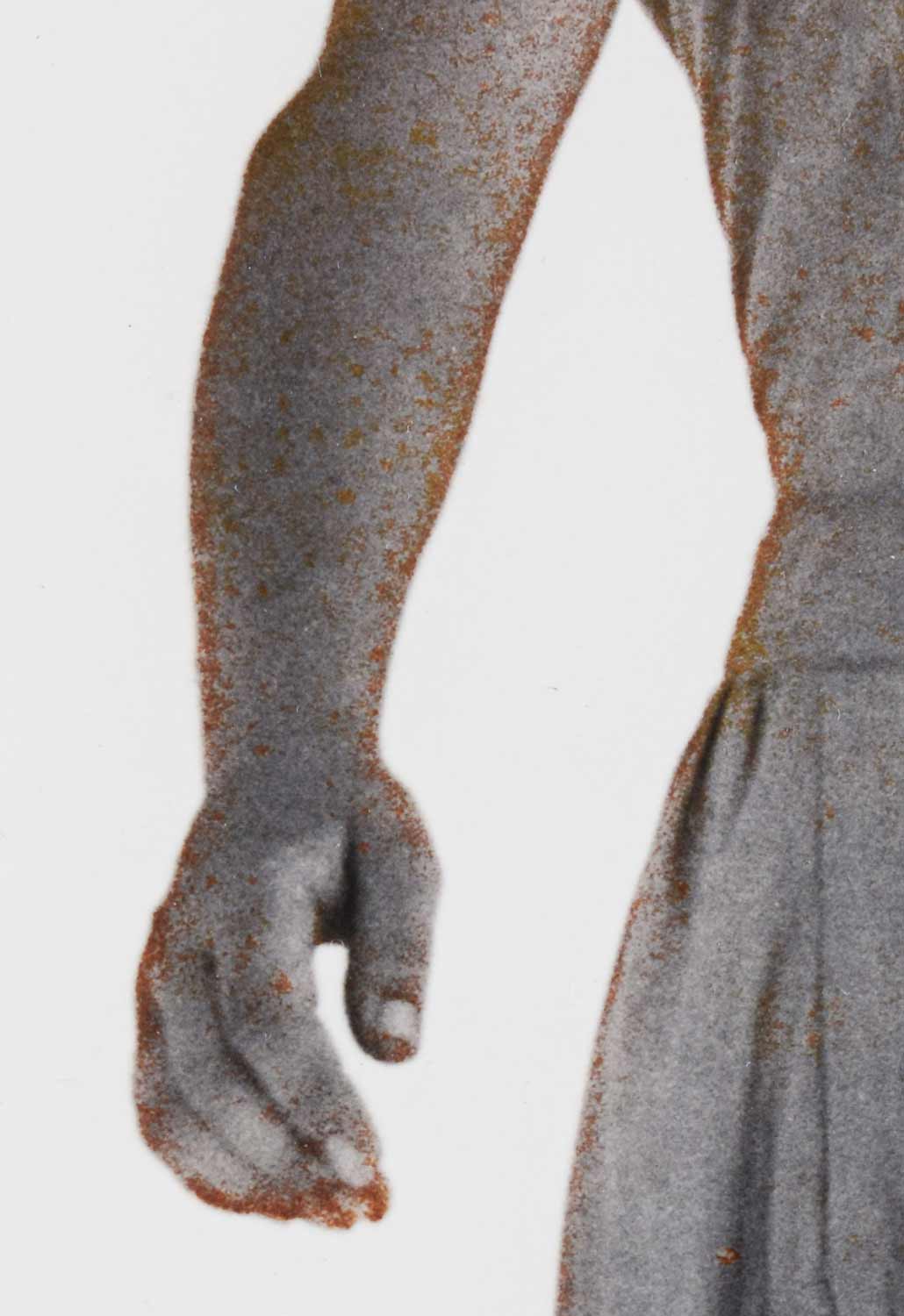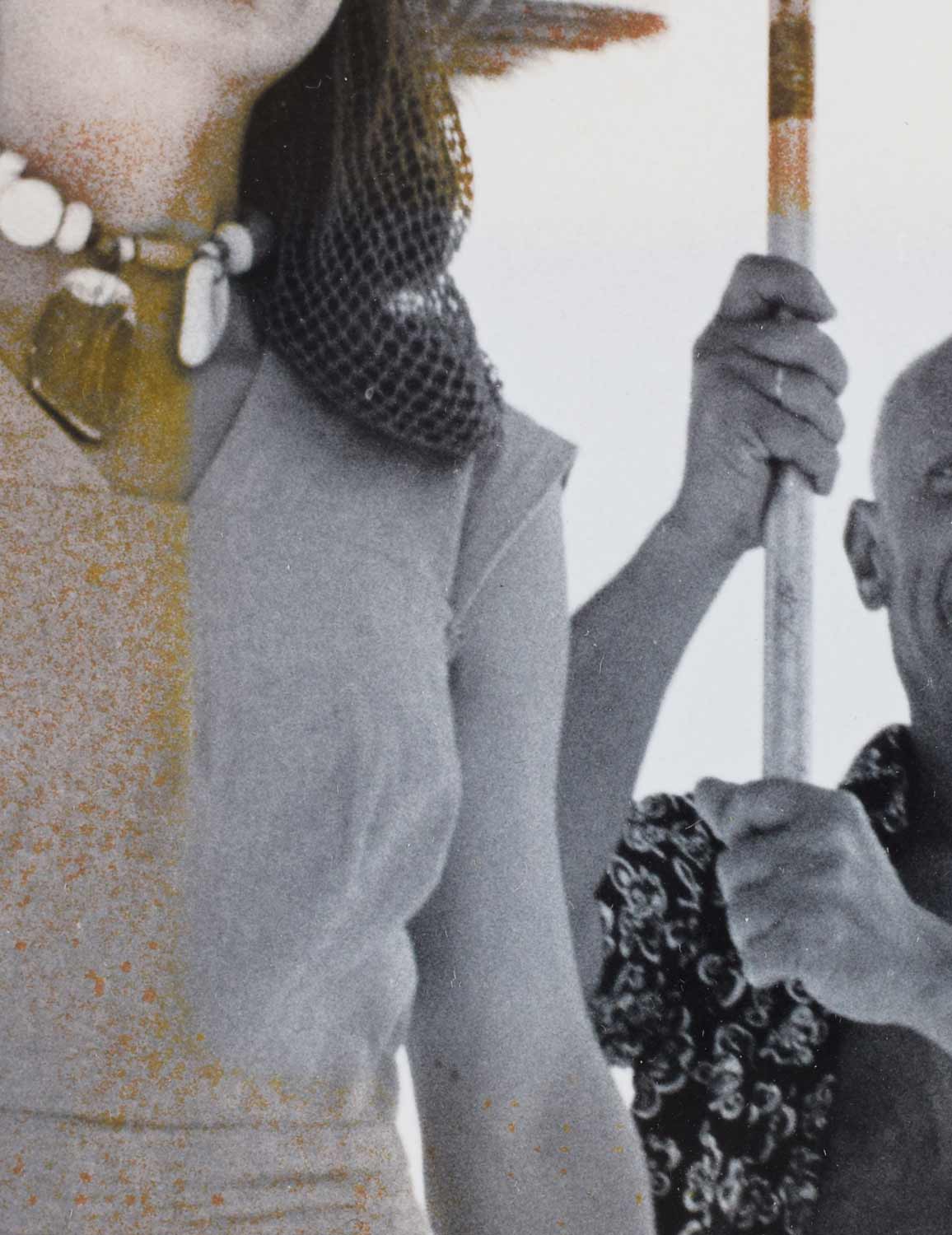It is a fact, not widely enough known, that the poor quality materials commonly used in commercial mounting and framing can seriously damage photographs, especially gelatine silver prints. Such prints are particularly vulnerable as the finely divided silver, which forms the image, has a huge surface area so is chemically very reactive. Fortunately the silver is encased in a protective layer of gelatine which is a wonderful photographic material. When wet it swells so that the developer, stop bath and fixer can reach the silver salts within and water can finally wash out the processing chemicals. When dry it contracts and becomes much more resistant to chemical penetration. The reactive silver image is encased and protected by the surrounding gelatine. Nevertheless, harmful chemicals will slowly penetrate. Fingerprints can appear years after a photograph is handled.
Over the past ten years I have been seeing fantastic and valuable photographs framed in the 1990’s and early 2000 coming in for conservation treatment showing fading and discolouration. Usually this takes the form of orange-brown spots on the lighter mid tones and silvering on the shadow areas (illustration 1).

The photographs have all been physically protected by glass and stout frame backboards. Since the time of Daguerre framing has successfully been used to protect vulnerable photographs, so what is going on, what is different now?
These symptoms immediately made me suspicious of the mounting and framing materials. Mostly the mounts were cut from acid-free board (clearly a low-risk, stable material) however, the frame backboards were all commercial, non-conservation quality materials, either hardboard, medium density fibreboard (a.k.a. MDF or SBS) or thin plywood. As they age these unsuitable boards release highly-damaging gaseous organic acids, peroxides, aldehydes and other reactive chemical compounds. Chemicals such as these can attack image silver, initiating a series of reactions that result in the silvering, fading and the orange-brown spots.
Image decay can of course be linked to a number of other causes ranging from poor darkroom practice (exhausted fixer, insufficient washing), through inherent problems with the photographic paper (resin coating and titanium dioxide instead of baryta) to pollutant gasses from outside the frame assemblage. So why do I focus on the commercial backboards?
The ‘smoking gun’ that gave unmistakable proof was the presence of a square removed from a frame backboard and filled with Perspex to allow the photographer’s stamp on the back of the photo to be seen. The only areas of photographic image unaffected by signs of decay were those aligned with this ‘window’ at the back. Further confirmation came with another photograph where a sticky label had been adhered to the back of the photograph. The label acted as a partial barrier to the reactive compounds being released by the backboard providing protection to the image immediately opposite (illustrations 2 and 3).


The aging of the frame backboards, and hence the release of the reactive gasses, is speeded up by displaying the photographs. Some of the light passes through the photograph and causes photo-oxidation of the poor quality backboard, triggering the release of yet more damaging chemicals.
The aggressive compounds emanating from unsuitable frame backboards do not immediately react with the image, first they have to penetrate through the gelatine to the image particles. This usually takes years and has an unfortunate side effect. At any point in time there will be reactive chemicals in the gelatine that haven’t yet reached the silver. Dampening or humidifying the gelatine to flatten out cockles or creases allows the accumulated chemicals to swiftly penetrate through to the silver where they will cause very rapid silvering/decay (in as little as 20 minutes!). Unwary/non specialist conservators and framers have found this out to their dismay.
Why do we not see the same problems with older frame backboards? The answer to this question lies in how the boards are produced. Older backboards are often simply cut from wood or various types of cardboard whereas MDF is made from ground up wood fibres mixed with urea-formaldehyde resin glue and plywood is held together with the same glue (or the similar phenol-formaldehyde glue). Large-scale production of MDF began in the 1980’s and it is no coincidence that it is photographs framed after the widespread introduction of MDF into the framing world that show this relatively rapid image decay.
How is such damage avoided? The best way to keep your framed photographic images in good condition is of course to use good quality materials such as acid-free board which has passed the Photographic Activity Test (ISO 18916). For frame backboards I use ‘Meridian’ high density board which has passed the PAT. A price comparison between 2.5 mm MDF and 2.8 mm Meridian board show that MDF costs £1.99 per m2 and Meridian board £6.76 per m2. A few pounds per frame/photograph.
Glazing with a good quality Ultra Violet (UV) filtering glass or acrylic will also help by cutting out most of this wavelength of light (UV is the most energetic wavelength and so initiates more chemical reactions). Not all UV-filtering glazing is equally efficient (despite manufacturer’s claims) so it is wise to be aware of this.
How about wooden frames themselves? These are a minor source of these destructive gasses. Firstly they are mostly plain wood, not modified wood products, and secondly the photographs are edge-on to the wooden frame so the area of exposure is tiny compared to frame backboards. However, over longer periods of time this will still lead to silvering around the image edges. One preventive measure is to use metal frames, however barriers such as lining wooden frame rebates with a suitable material can also work well. To be effective the lining or barrier needs to be continuous, with overlaps at the corners and not the slightest gap. Even pin holes will massively reduce the efficiency of the barrier.
To sum up: remember that your silver images are only temporarily frozen in time. They remain susceptible to change and decay from the contaminating gasses related to commercial framing practices, and, to a lesser extent, from the environment around us.

